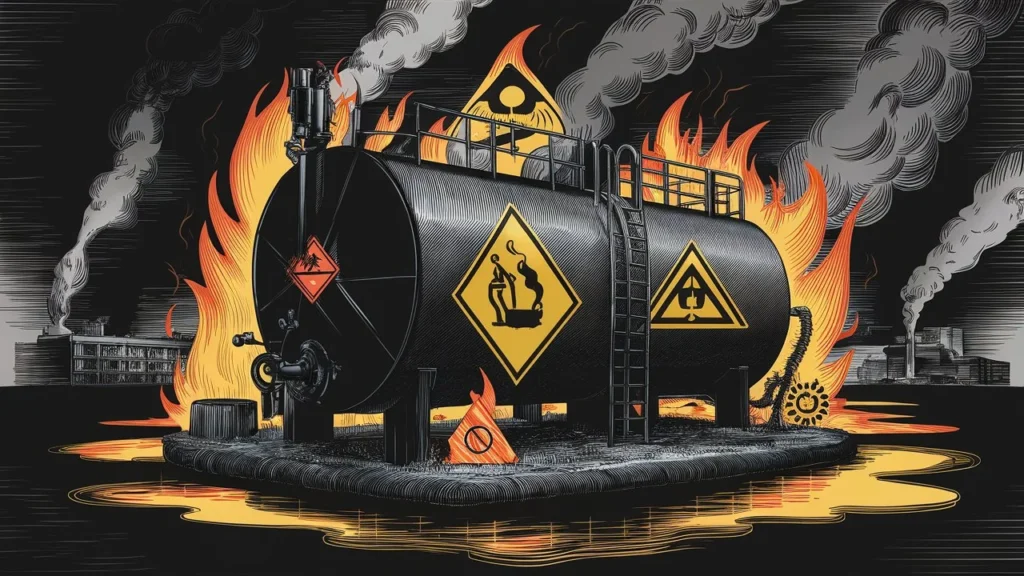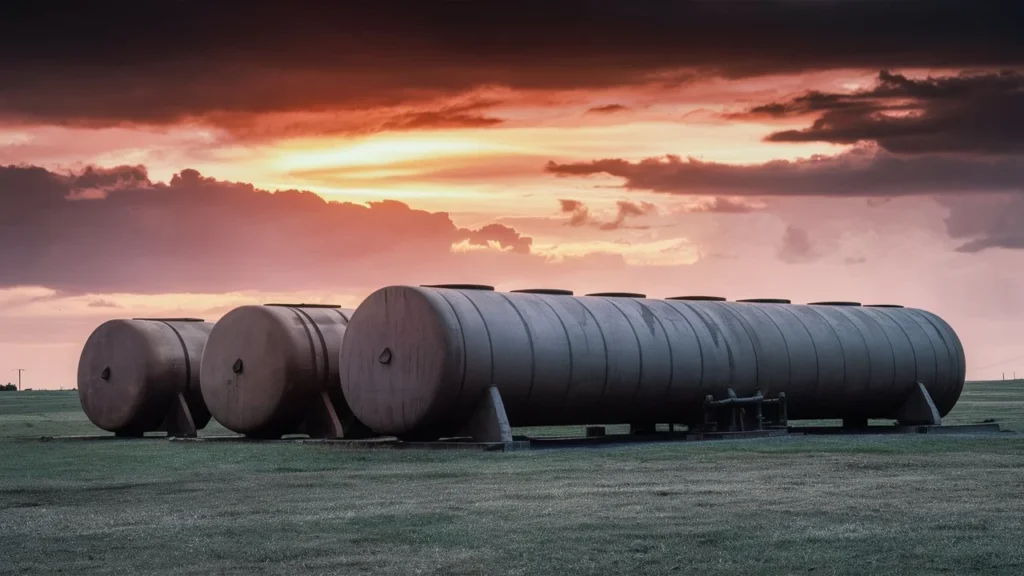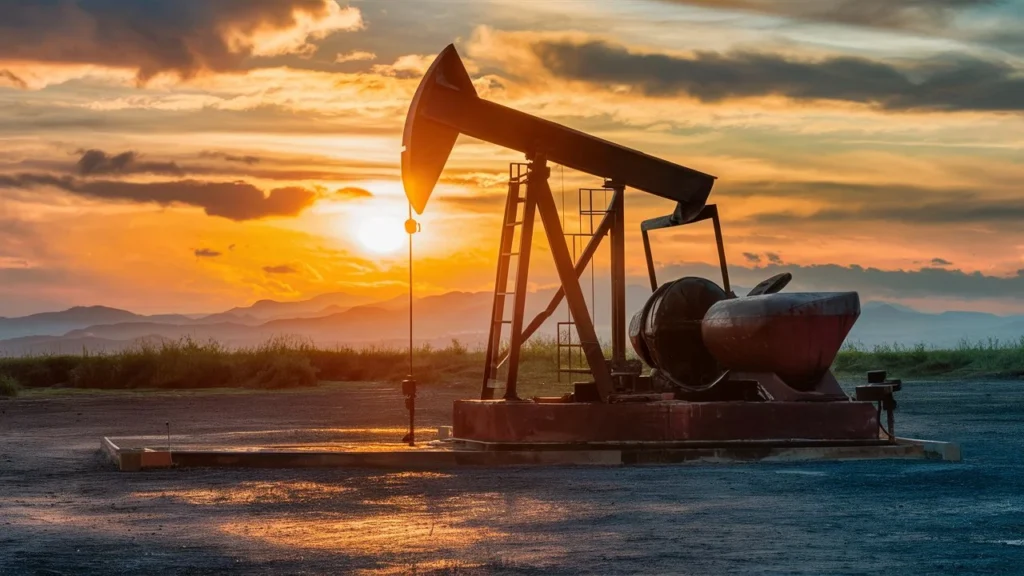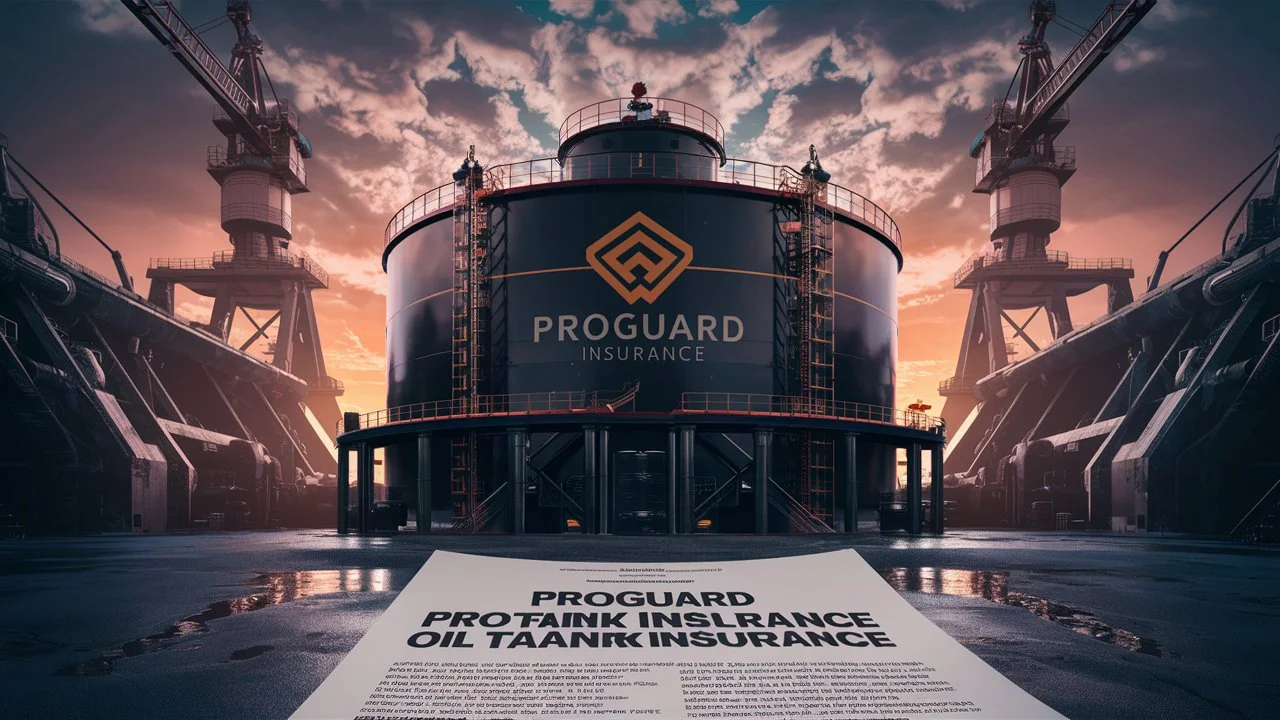Proguard Oil Tank Insurance is for a homeowner who has an oil tank for heating. You understand the importance of protecting your property from potential hazards, but have you considered the economic impact of an oil spill or leak?
The fuel tank accident had severe consequences:
• Environmental damage that led to costly cleanup
• Legal liabilities and third-party payroll claims
• Property damage to your home and nearby properties
This comprehensive guide covers a range of oil reservoir insurance policies. It includes details on homeowners insurance coverage and support. You’ll also find information about Independent Environmental Insurance (EIL).
Additionally, the guide explores third-party liability and disciplinary indemnity options. Each section breaks down these policies to help you understand their coverage.
Understanding Oil Tank Risks

Owning an oil tank for home heating comes with potential risks, which can have severe financial and legal consequences if not properly managed. Knowing these risks is essential for making an informed decision about the right oil tank insurance.
Environmental Contamination from Oil Leaks or Spills One of the significant hazards of being in an oil storage tank is the possibility of leaks or spills that could damage soil and groundwater. Even small amounts of water can cause damage if there is a more significant environmental impact, pose health hazards, and affect nearby water supplies.
Expensive cleanup costs
These costs include hiring professional eco-friendly companies, soil testing and analysis, and removing and disposing of contaminated soil. Additionally, they cover the treatment and maintenance of groundwater.
Without proper insurance, homeowners can be responsible for shouldering the financial burden of these expensive home repair efforts.
Legal Compensation and Lawsuit
Oil spills and leaks can extend beyond your property boundaries, affecting nearby homes, businesses, or public spaces. In such cases, you could face legal liability and potential lawsuits from affected parties seeking compensation or injury.
Defending yourself in these lawsuits can be a long and expensive process involving legal fees, settlements, and potential judgments against you. Proper oil tank insurance can cover these legal costs and protect your assets.
Property Damage Oil leaks and spills can cause significant damage to your personal property, including your home’s foundation, basement, and surrounding areas. Efforts to improve may require excavation size, repair, and even replace your oil tank, which can cost a lot of money.
Types Of Oil Tank Insurance Policies

Many insurance options are available to protect your home and property from the risks associated with oil spills. Understanding the policies and their implications can help you make an informed decision.
Homeowners’Insurance Coverage for Oil Tanks
Many homeowners think that their standard homeowner’s insurance policies provide adequate coverage for oil tank-related issues. However, this is often not the case. Homeowners’ insurance policies generally have limits and exclusions regarding oil leaks or spills.
You can purchase additional endorsements or riders on your existing homeowners’ policy and get coverage for your oil tank.
These approvals may provide coverage for several key areas. They can include cleanup costs related to oil spills or leaks, third-party liability for damage to neighbouring properties, and replacing or repairing your oil tank.
Reviewing your homeowners’ policy thoroughly and discussing your specific coverage needs with your insurance agent is essential.
Independent Oil Tank Insurance Policies
You may want to consider an independent oil tank insurance policy for comprehensive protection. These policies address the unique risks associated with oil tank ownership and may result in coverage beyond homeowners’ approval.
Environmental Injury (EIL) Coverage
EIL insurance is standalone coverage for environmental damage caused by oil spills or pollution. This coverage may include the costs of mitigating soil and groundwater contamination.
It also protects against third-party bodily injury and property damage claims. Additionally, EIL insurance covers legal defence costs in court, providing comprehensive protection in case of environmental incidents.
Third-Party Liability Coverage
Besides EIL coverage, an independent oil reservoir insurance policy may include third-party liability protection. This coverage can help protect you from claims made by third parties for damages or injuries caused by oil spills or leaks on your property.
Cleanup and Repair Covers Standalone
Standalone over costs associated with cleaning and repairing oil spills or leaks on your property. These include costs for professional maintenance companies, soil testing, and contaminant removal.
Factors Affecting Payments and Premiums
It should be noted that premiums for oil spill insurance can vary depending on many factors, including age. Your oil tank is identified by its condition, size, potential, whether underground or underground and proximity to water sources or sensitive areas.
What ProGuard Tank Insurance Covers:

Underground Oil Storage Tanks
- Up to $100,000 in cleanup protection resulting from a fuel oil tank release
- A sub-limit of up to $25,000 for third-party cleanup costs (below groundwater or on neighbouring property)
- Up to $1,400 to repair or replace your fuel oil tank
- Affordable deductible of $1,000 per release
- Protection for both your tank and the associated tank lines
- Voluntary pull of tank allowed after one year
- Discounts on fuel oil tank testing
- 100% transferable if you sell your home
- Annual cost of $332 without the voluntary option to pull tank after one year
- Annual cost of $447 with a voluntary option to pull tank after one year
Aboveground Oil Storage Tanks
- Up to $50,000 for cleanup costs resulting from a fuel oil tank release
- A sub-limit of up to $15,000 for third-party cleanup costs (below groundwater or on neighbouring property)
- Up to $1,500 to repair or replace your fuel oil tank
- Proactive tank replacement
- Affordable deductible of $500 per release
- Protection for both your tank and the associated tank lines
- 100% transferable if you sell your home
- Only $40 per year with automatic fuel delivery
If you need an oil storage tank upgrade or some dependable storage tank insurance for your tank, contact your local heating oil dealers.
Read More: Choctaw American Insurance Inc.
Choosing the Right Oil Tank Insurance

By understanding the different types of oil storage insurance policies available, the next step is to determine which option best suits your specific needs and circumstances. Some things to consider when choosing an oil shed here is the right insurance:
Assessing your particular needs and risks
Start by assessing your risks and potential liabilities. Consider your oil tankage, condition, location (underground or underground), and proximity to water sources or nearby resources. These factors will help you determine the level of risk you face and how much coverage you may need.
Comparing Policy Features and Coverage Limits
Be careful when comparing the features and coverage limits of different oil tank insurance policies. Look for comprehensive policies that include environmental mitigation, third-party liability coverage, and the cost of oil tank replacement or repair.
Pay close attention to plan limits, discounts, and any exclusions or restrictions you may apply. Make sure the coverage is commensurate with the amount you can disclose and the value of your property.
Evaluating Insurers and Their Financial Strength When choosing an oil tank insurance provider, consider their financial strength and reputation. Look for companies with solid credit ratings and a proven track record of handling credit cards efficiently and fairly.
Carefully review the exclusions and limitations outlined in each policy to understand policy exclusions and limitations. Some general exclusions include intentional acts, war or terrorism, pre-existing conditions, or damage resulting from improper maintenance or negligence.
Be sure to understand these exclusions and take steps to mitigate fall risks.
Top Tips for Maintaining Your Home Heating Oil System and Insurance
A proper oil tank insurance policy is the first step in protecting your home and property. Proper maintenance and periodic reviews of your coverage are equally essential to ensure that you remain protected and in compliance with the terms of your policy.
Regular inspection and maintenance
Regularly inspecting and maintaining your oil tank is essential to reducing the risk of leaks or spills. Many insurers require periodic inspections as a coverage condition, so following their guidelines is important.
Hire a qualified oil tank inspector
regularly, usually every 1-2 years for underground tanks and every 5-10 years for underground tanks. During these inspections, workers look for signs of damage, leaks, or other issues that could compromise the integrity of your tank.
Checking for signs of leaks or damage
In addition to a professional inspection, it is essential to regularly inspect your oil tank and surrounding areas for any signs of potential problems. Look for signs of oil leaks, discoloured soil, or a distinctive smell that could indicate a leak.
Contact your oil supplier and insurance provider immediately if you suspect a leak. Early action can help reduce contamination and overall cleanup costs.
Keep accurate records
Keep detailed records of your oil tank inspections, maintenance activities, and any repairs or modifications. These records can be invaluable in an insurance claim, demonstrating your due diligence in maintaining your oil tank.
Keep a copy of your insurance policy, endorsements or riders, and premium payment documentation for easy reference.
Update coverage as needed
As your circumstances change, it’s essential to periodically review your oil tank insurance coverage to ensure it remains up to date. For example, if you replace your old oil tank with a new tank, you may need to update your system to reflect the change.
Similarly, suppose you make alterations or modifications to your home that could affect how close your oil tank is to sensitive areas or water sources. In that case, you may need to adjust your coverage accordingly.
By proactively managing your oil tank and insurance, you can reduce the chances of incidents and ensure that you have the necessary protection should an unfortunate event occur.
Claims Process and Expectations
Even with upkeep, oil spills do happen. It helps to know how claims are handled. The following is how to handle an oil leak:
To submit an insurance claim, follow these instructions.
- Notify your insurance provider immediately: Most policies require prompt notification of any potential claims.
- Document the incident: Take photos or videos of the affected area, and make notes about the date, time, and any observed damage or contamination.
- Mitigate further damage: If possible, take steps to prevent the spread of contamination, such as stopping the leak or containing the spill.
- Gather relevant documentation: Collect records of your oil tank inspections, maintenance history, and any other pertinent information your insurance provider may request.
- Complete claim forms: Your insurance company will provide claim forms for you to fill out, detailing the incident and the damages or losses incurred.
Evidence and Documentation Are Needed Your insurance company may need different proof and documents to support your claim. This may consist of:
- Copies of your oil tank insurance policy
- Inspection reports and maintenance records
- Receipts or invoices for any cleanup or remediation costs incurred
- Photos or videos documenting the extent of the damage or contamination
- Environmental testing reports or assessments conducted by professionals
Claim Processing and Resolution Timelines
An oil tank insurance claim’s processing depends on its complexity, and the insurance provider processes the following generally:
- Initial review and acknowledgement of your claim within a few business days
- Assignment of an adjuster or claims representative to investigate the incident
- Requests for additional documentation or information as needed
- Negotiations or adjustments to the claimed amount, if applicable
- Final claim settlement or denial, typically within 30-60 days for straightforward claims
To streamline the claims process, be patient and cooperative and quickly provide needed information and evidence.
Ways to Resolve Disputes
Most insurance companies include dispute resolution options if you disagree with your claim or the claims process. They may include:
• Internal appeals or reviews • Mediation or arbitration services
• If required, seek legal recourse (e.g., a lawsuit).
Understanding the claims procedure and setting reasonable expectations will help you manage an oil tank mishap and reach a fair conclusion.
Cost Considerations
When choosing oil tank insurance, cost and long-term savings must be considered. Though rates may appear excessive, sufficient coverage can prevent significant financial losses in the event of an oil spill or leak.
Average Premiums for Different Policies
Oil tank insurance costs depend on the policy type, coverage limits, and property risks. A summary of average annual premiums:
- Homeowners Insurance Endorsements or Riders:
- Cost range: $100 – $500 per year
- Provides basic coverage for oil tank leaks or spills, often with lower limits
- Standaloneone environmental liability (EIL) Insurance:
- Cost range: $500 – $2,000 per year
- Offers more comprehensive coverage for environmental cleanup and third-party liability
- Combination Policies (EIL + Third-Party Liability):
- Cost range: $1,000 – $3,000 per year
- Provides the broadest protection, including coverage for legal expenses and property damage claims
Factors Affecting Insurance Costs
Several factors can influence the cost of your oil tank insurance premiums, including:
- Age and condition of your oil tank
- Tank size and capacity
- Location (aboveground or underground)
- Proximity to water sources or sensitive environmental areas
- Your home and potential liability exposure
- Your chosen deductible amount
- Your insurance provider and the level of coverage
Risk Mitigation for Long-Term Savings
Oil tank insurance may seem like an extra cost, but it can reduce oil tank ownership risks and save money over time.
Oil spill cleanup, environmental damage repair, and legal defence can cost tens or hundreds of thousands of dollars. These charges could wipe out your savings or cause you to go bankrupt without insurance.
Comprehensive oil tank insurance protects you against these major financial threats. Your insurance policy may cover cleanup, remediation, and legal fees after an occurrence, saving you from financial ruin.
Oil tank insurance prices should be weighed against the hazards and obligations homeowners incur with oil tanks. By making an informed choice and selecting the correct coverage, you can safeguard your assets and financial future.
Conclusion
You can rest easy knowing that purchasing comprehensive oil tank insurance covers these substantial financial risks. Your insurance coverage can protect you financially in the case of an accident by paying for cleanup, remediation, and any related legal fees.
Oil tank insurance costs should be carefully considered in light of the dangers and responsibilities that come with owning one. By doing your research and selecting the appropriate coverage, you may secure your financial future and safeguard your assets.

Justin Taylor is the creative force behind Insuranted.com, a premier destination for insightful and trustworthy insurance information. With a dedication to demystifying insurance complexities, Justin strives to equip readers with the knowledge they need to make smart, informed decisions.










